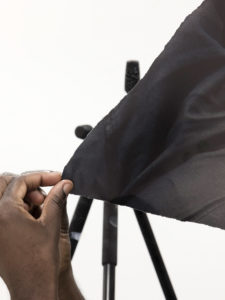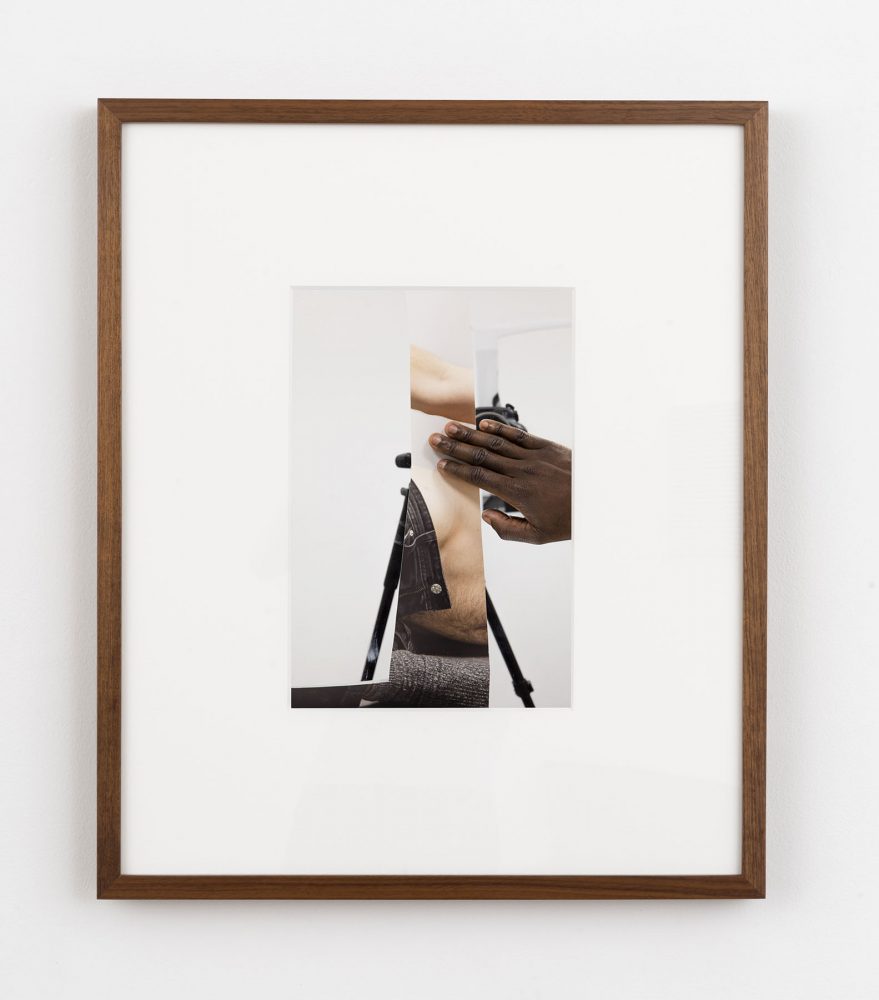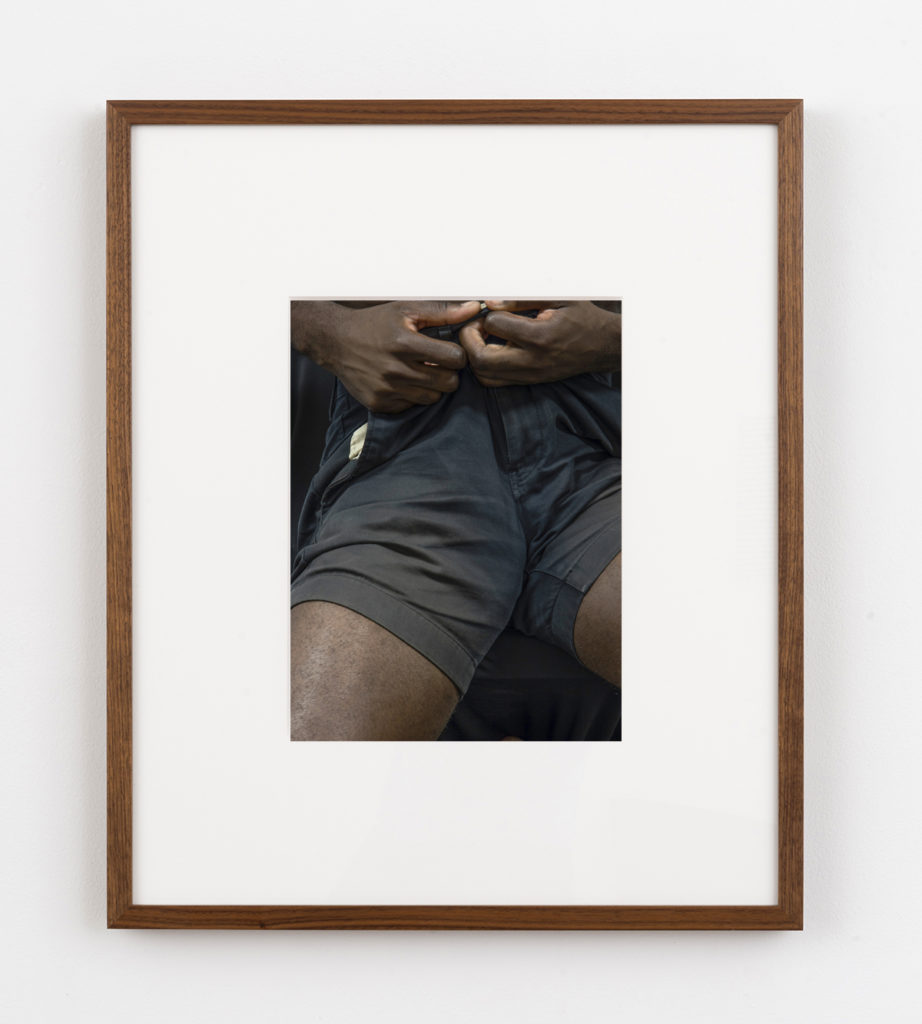
Paul Mpagi Sepuya, works 2014-2016
About:
The Autonomous Limbs of Paul Mpagi Sepuya, by Lindsay Garcia
Published on the occasion of the exhibition Fragmented Gaze, curated by Loren Britton
Everyone who enters an artwork-laden space enters with their own fragmented gaze. Our personal baggage, the genealogy and genes of our families, and the history of our multitudinous cultures, classes, races, genders, and sexualities—all these factors, and others, lead us to see the works from our unique point of view. An African-American queer artist hailing from the precipices of the Los Angeles art scene, Paul Mpagi Sepuya offers a deliciously ambiguous point of entry into the history of photography, the hyper-sexualization of black male bodies, and the art studio as muse. Through layering modes of representation and a subtle color palette, Sepuya is able to create compositions that force the viewer to question commonly held assumptions about the figure of the artist, queer gaze, and photographic conventions.

Each of the works in this exhibition employs the triangular shape as a main compositional element. The triangle is no stranger to the history of LGBTQI people in the United States. In the 1980s, the pink triangle became the symbol of ACT UP, a queer AIDS activist group formed in 1987. In Draping, the folds in a hooded sweatshirt, worn by a young, hairless, masculine figure, form this shape. In Figure/Ground Study, two hands tug at a piece of rough-cut dark photography paper, forming the three-sided shape and covering up the tripod (another triangle) against a white background. In Mirror Study, the triangle emerges from the center of the photograph, and a bit of eye trickery leaves the viewer wondering if the triangle is a mirror, a poorly xacto-ed large-scale photograph, or a portal into a parallel universe where only fragmented body parts live autonomously. The allusion is that the tripod floats in front of the tripod, but, in fact, two male arms outstretch from the opposite sides of the rectangular frame and continue into the triangular frame.

Today’s art world is remarkably “post-studio,” meaning that a large conglomerate of artists sees their laptop or their brain as the site of art production, not the messy rat-infested post-industrial pre-gentrification spaces of the late twentieth/early twenty-first century. However, Sepuya’s studio is, in fact, material and exists in these images as just another white cube, as a site for which clean lines transform simple shapes and bodies into snapshots of an experimental moment of time, some playful experience that just happens to capture all of the elements to the artist’s liking. In actuality, a non-artist may not sense the studio signifiers in Mirror Study. The top frame of the photograph reveals a bright florescent light that almost gets lost. The grey of the floor is a common color for artist studio floors (and also for calibrating light on a digital camera) and is pockmarked by layers of paint covering up past spills and dust. Figure/Ground Study, on the other hand, only reveals the studio by its covering up—the black triangle masks a tripod which looks to be set in front of one of those white paper backdrops that hangs from the ceiling on a roll and allows human subjects to appear as if floating in space. Draping owes to the studio by acting as a cropped and close-up’ed image of a studio portrait. Zoom out, and this person may be sitting on a stool in front of one of the floaty, white backdrops himself.

There is a feeling of sensuality and excitement that prevails in each of these photographs. Draping, for example, references an alluring photograph that one might send to a lover, with their head cut off, lest it fall into the wrong hands. The nipple, barely visible behind the black sweatshirt, and the shadow illuminating the pectoral muscle invite touch by the person behind the camera. The two hands in Figure/Ground Study pinch the end of the black strip as if it were fondling a nipple, sensually holding it with the utmost care. Perhaps the camera on the tripod behind is documenting some forbidden sexual act and the hand is trying to shield the viewer from seeing this intimacy. Mirror Study, however, is sexually inviting. In this photograph, it is hard to keep track of how many bodies make up the various body parts in the image. Two legs, four arms, and an unidentifiable hairy body part enter the frame—do those parts belong to one human body or are we witness to an orgy? It’s hard to tell. All of these body parts touch and line up even though they are not all part of the same shot, some clearly having been taken previously. The arms that hold up the triangle caress the body (or bodies) within that frame.

These works all expose the intricacies of gaze fragmentation in present-day American culture. Between the social and political challenges of being an African American artist in Los Angeles (among a sea of white, male, straight exhibitions), the newly re-vamped racial discussions via #blacklivesmatter, and the recent passing of same-sex marriage, it is challenging not to read these current events into the works. While Sepuya’s works at times seem overly formal via depictions of the idealized male bodies and simplicity of shapes, the details within each work reveal a narrative that each viewer can come to differently, with their own fragmented gaze. (text on website artist)
